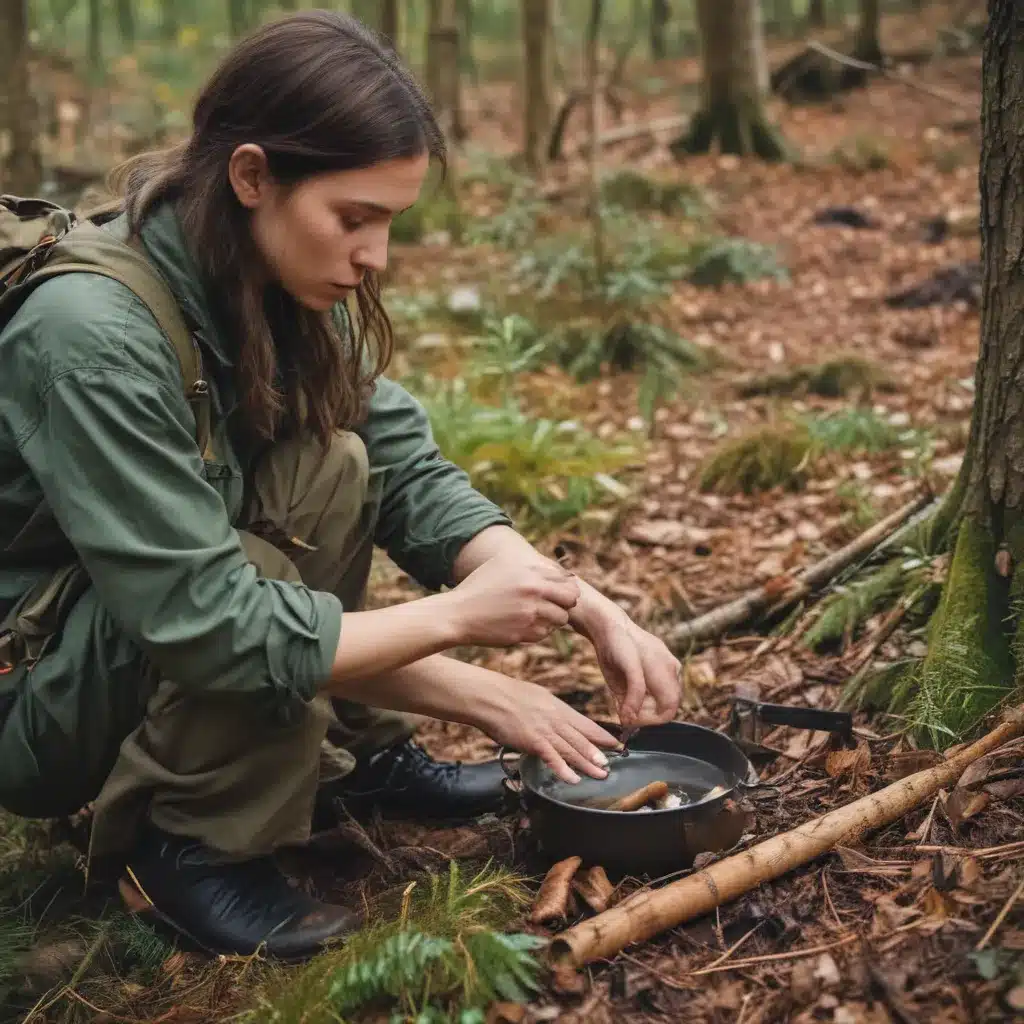
Uncovering the Heart of Bushcraft
As a wilderness skills enthusiast, I have a deep passion for encouraging others to venture into the woods and experience nature through the lens of bushcraft. However, I sometimes fear that the relentless promotion of expensive gear and equipment may put people off from exploring this enriching pursuit.
You see, there’s this pervasive notion that bushcraft necessitates heading into the wilderness with nothing but a knife, sleeping out in an improvised shelter, and foraging for your dinner. While these feats are certainly possible for those with the right skills, this combination can be daunting for the beginner. After all, who wants to feel like they need to be Bear Grylls just to spend some quality time in the great outdoors?
As outdoor enthusiast Paul Kirtley wisely points out, the truth is you don’t need to break the bank to equip yourself for a meaningful bushcraft journey. In fact, the essence of bushcraft is all about finding and utilizing the natural resources around you, cultivating a more immersive and direct relationship with the natural world.
Keeping it Simple
So, what are the basics you really need to get started? Well, let me share with you the few essential items that will set you on the path to bushcraft bliss, without the burden of unnecessary bells and whistles.
The Cutting Edge
The most important tools for any budding bushcrafter are your cutting implements. You don’t need to splurge on the latest custom-made, artisanal knife to get the job done. As demonstrated in this informative video, a simple, fixed-blade knife with a comfortable handle and an uncomplicated blade will serve you well. The Morakniv 840 Companion, for example, is an affordable and reliable option that’s become a go-to for many bushcraft enthusiasts.
But a knife alone won’t suffice. You’ll also want to invest in a good folding saw, like the Bahco Laplander. Saws are incredibly efficient at cutting across the grain of wood, making them invaluable for tasks that a knife struggles with. Plus, they’re generally safer to use than knives, reducing the risk of nasty accidents.
Keeping an Edge
Of course, no matter how sturdy your cutting tools, they’ll eventually become dull. That’s why it’s essential to have a sharpening stone on hand. A simple combination oilstone or waterstone from your local hardware store will do the trick for sharpening back at camp. And for on-the-go touch-ups, a compact pocket whetstone is a must-have.
Patching Things Up
Accidents can happen, even with the utmost care. That’s why it’s wise to assemble a small first aid kit, tailored to your specific needs. This could include essentials like bandages, antiseptic, and any personal medications. It’s all about being prepared for the unexpected.
The Spark of Life
Fire is arguably the most crucial bushcraft skill, not to mention a vital survival tool in many environments. As this video demonstrates, there are numerous methods for igniting a flame, from sparks and friction to chemical and electrical means. But the most reliable and versatile option is the modern ferrocerium rod, or “Swedish firesteel.” With a little practice, you can quickly generate a shower of scorching hot sparks to ignite a wide range of natural tinders.
Of course, creating the initial spark is only half the battle. You’ll also need to understand how to nurture that tiny flame into a roaring fire, using the right materials and techniques. As this wilderness survival guide explains, developing a repertoire of fire management skills is essential for staying warm, purifying water, and even signaling for help if needed.
Quenching Your Thirst
Staying hydrated is crucial in any wilderness setting, and this video offers some valuable insights on how to locate, collect, and purify water in the great outdoors. While a simple water bottle may suffice for day trips, longer excursions will require you to source water from natural sources. Learning to identify reliable water sources, as well as techniques like boiling and filtration, can quite literally be a lifesaver.
Sheltering from the Elements
When it comes to camping in the wild, you don’t need to invest in a high-tech, ultralight tent to stay comfortable and protected. In fact, the humble tarp is a bushcrafter’s best friend. Whether you’re sleeping on the ground or in a hammock, a good-quality tarp, some sturdy ropes, and a few essential knots can provide ample shelter from the elements. And if you really want to level up your bushcraft skills, you can even learn to construct more elaborate, natural shelters using the resources around you.
Cooking Up a Storm
No bushcraft adventure is complete without a bit of campfire cookery. A sturdy, versatile billy can is an essential item for boiling water, preparing hot meals, and more. Just make sure to choose one with a folding handle or bail that can be easily suspended over the fire.
Carving Out Your Niche
As you progress in your bushcraft journey, you may find yourself drawn to the satisfying art of woodcarving. From spoons and bowls to custom camp tools, the wilderness survival guide suggests that carving is a fantastic way to develop your woodcraft skills while creating useful and personal items.
Tying it All Together
Of course, this is just the tip of the iceberg when it comes to bushcraft essentials. You may also want to consider items like a compass, fire-starting aids, cordage, and even a headlamp for those long summer nights. But the key is to start small, focus on the fundamentals, and allow your skills and confidence to grow organically.
Remember, the beauty of bushcraft lies not in the gear, but in the connection. So, grab a knife, a saw, and a tarp, and venture forth into the wild. Loch Ness Shores in the Scottish Highlands is the perfect place to put your newfound bushcraft skills to the test. Who knows what delights and discoveries await you in the great outdoors?

